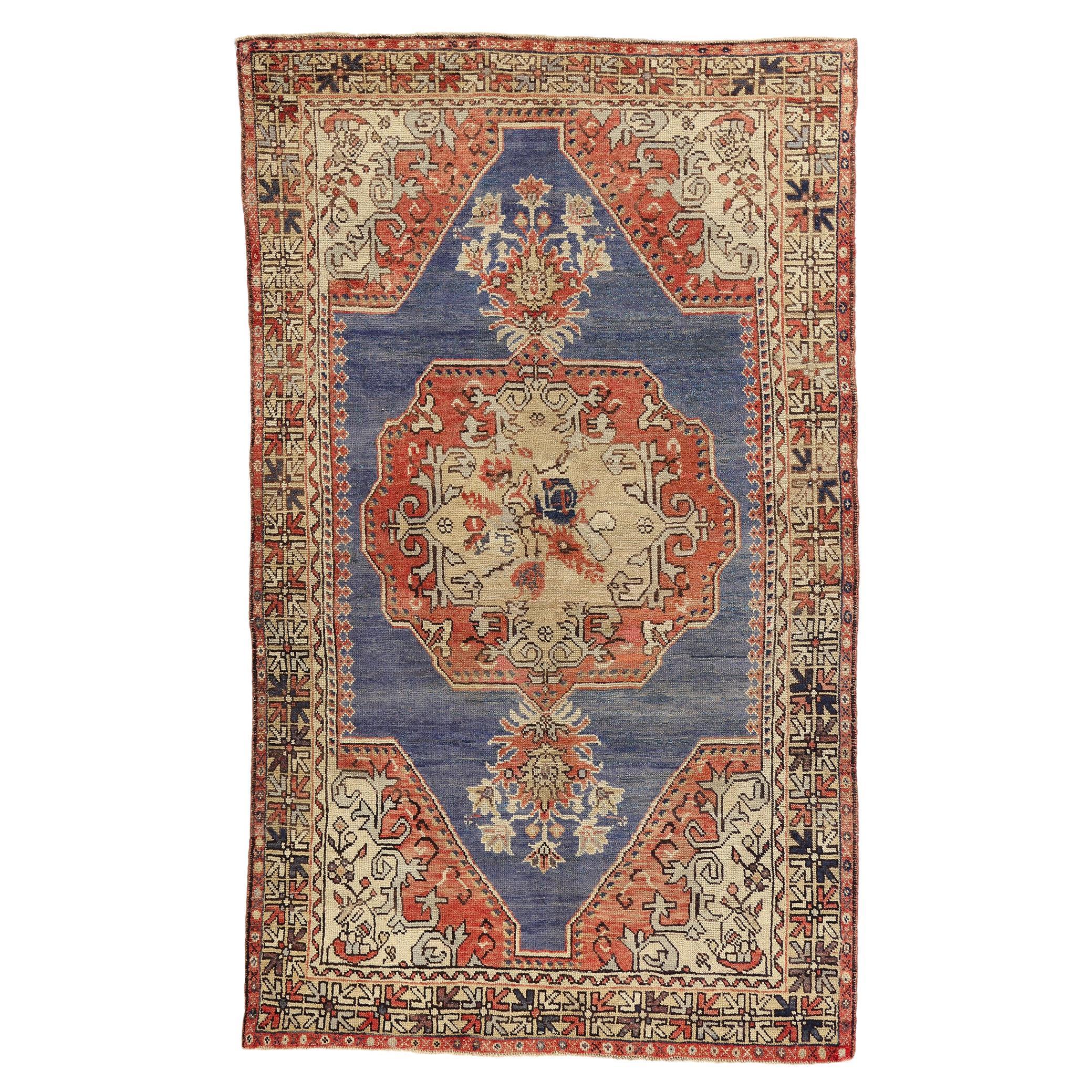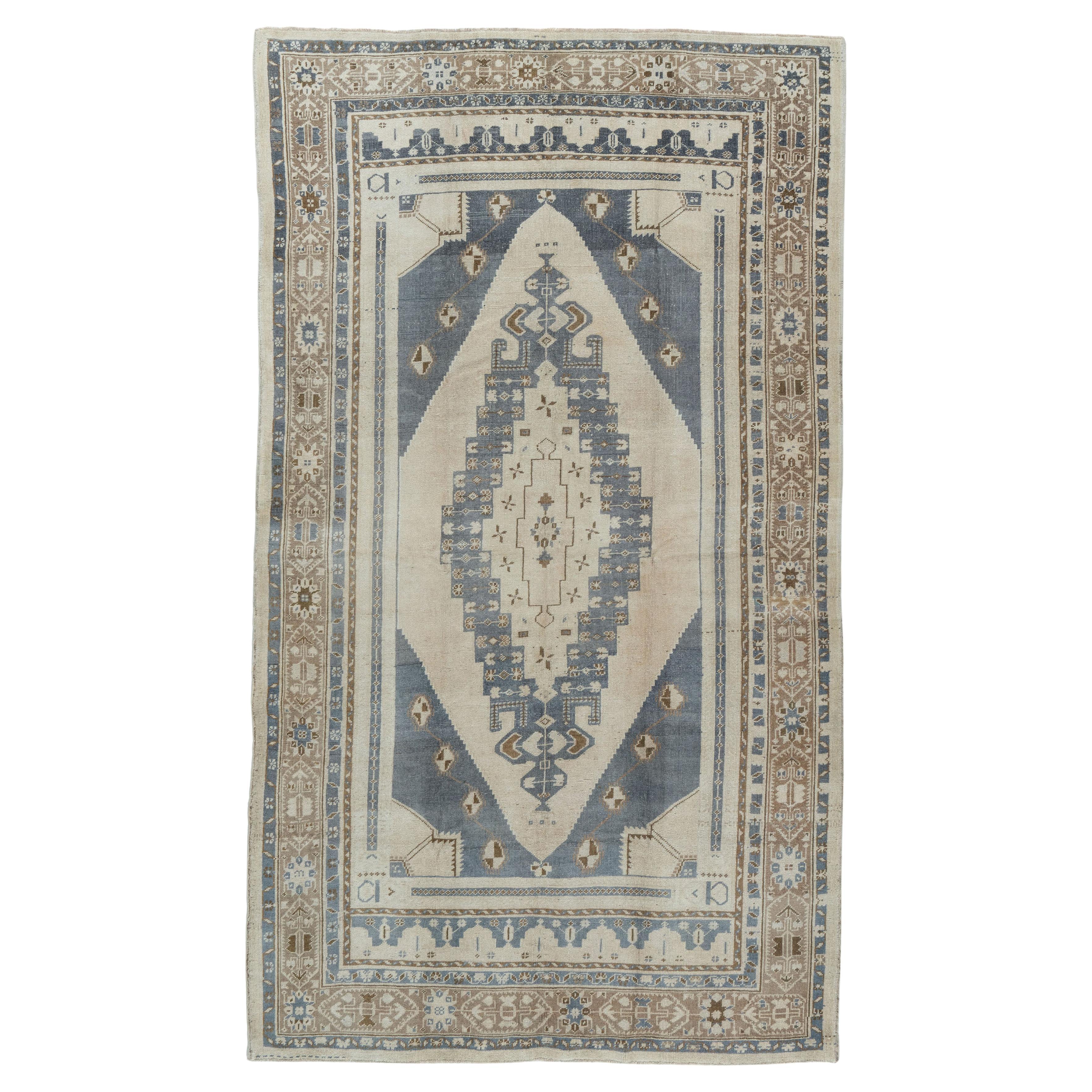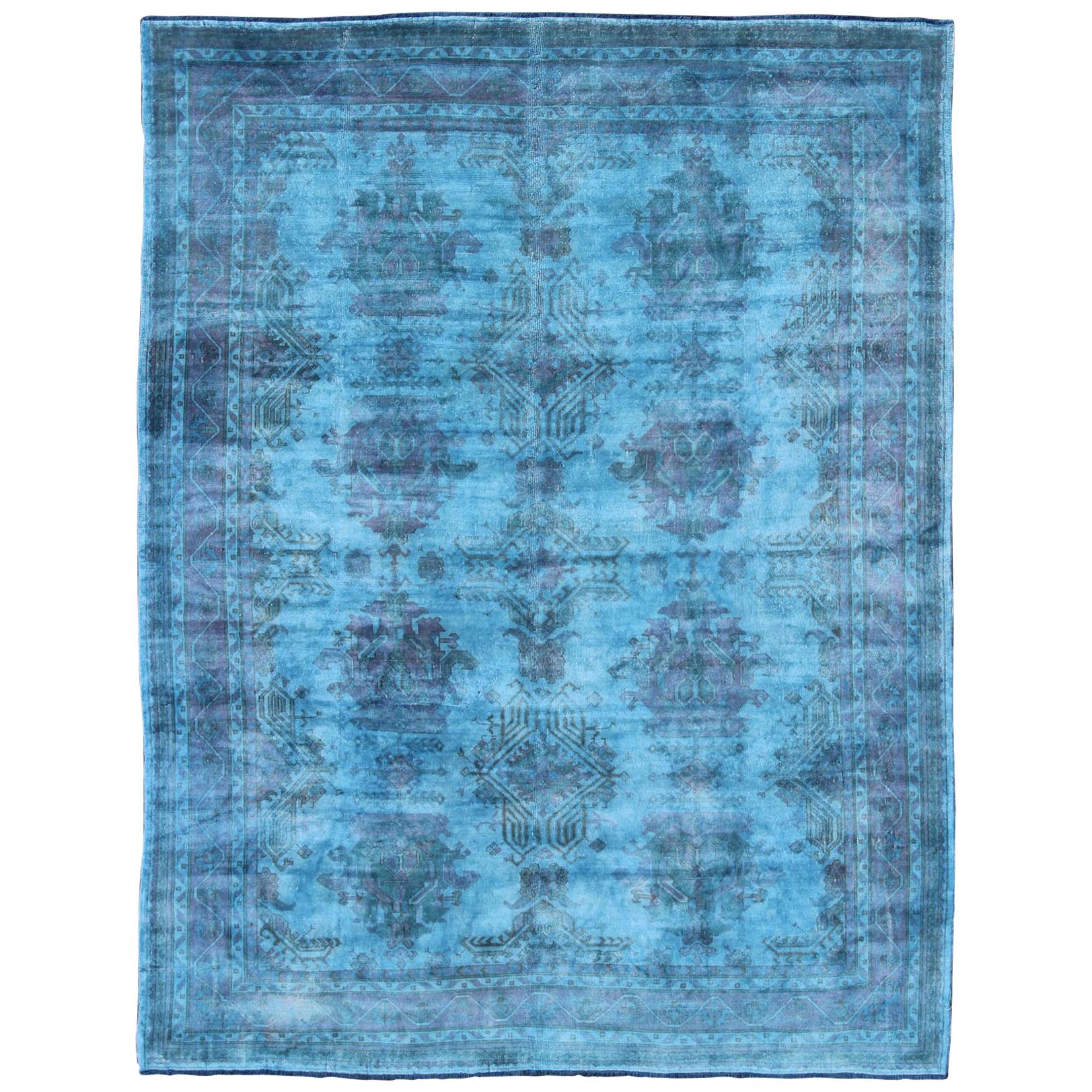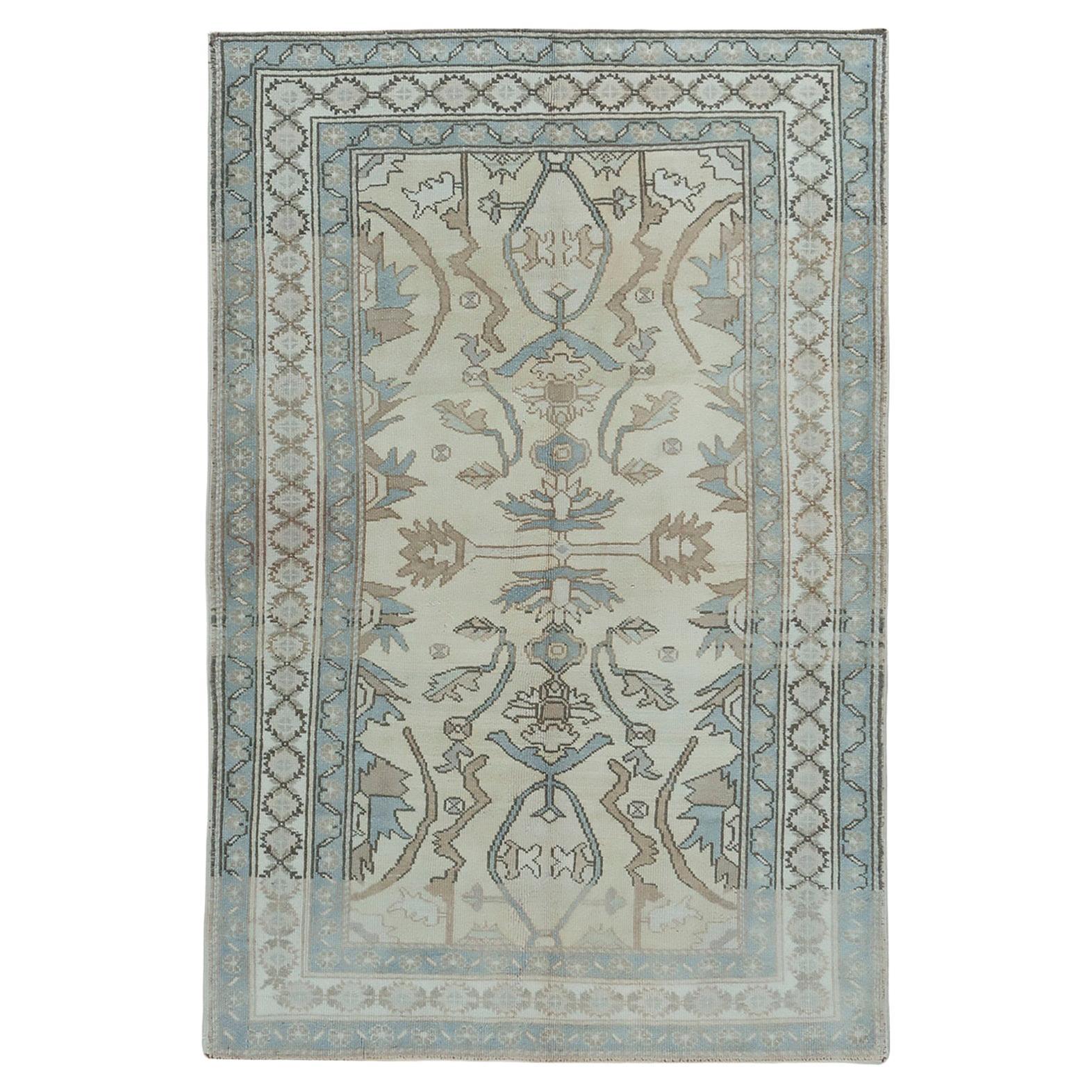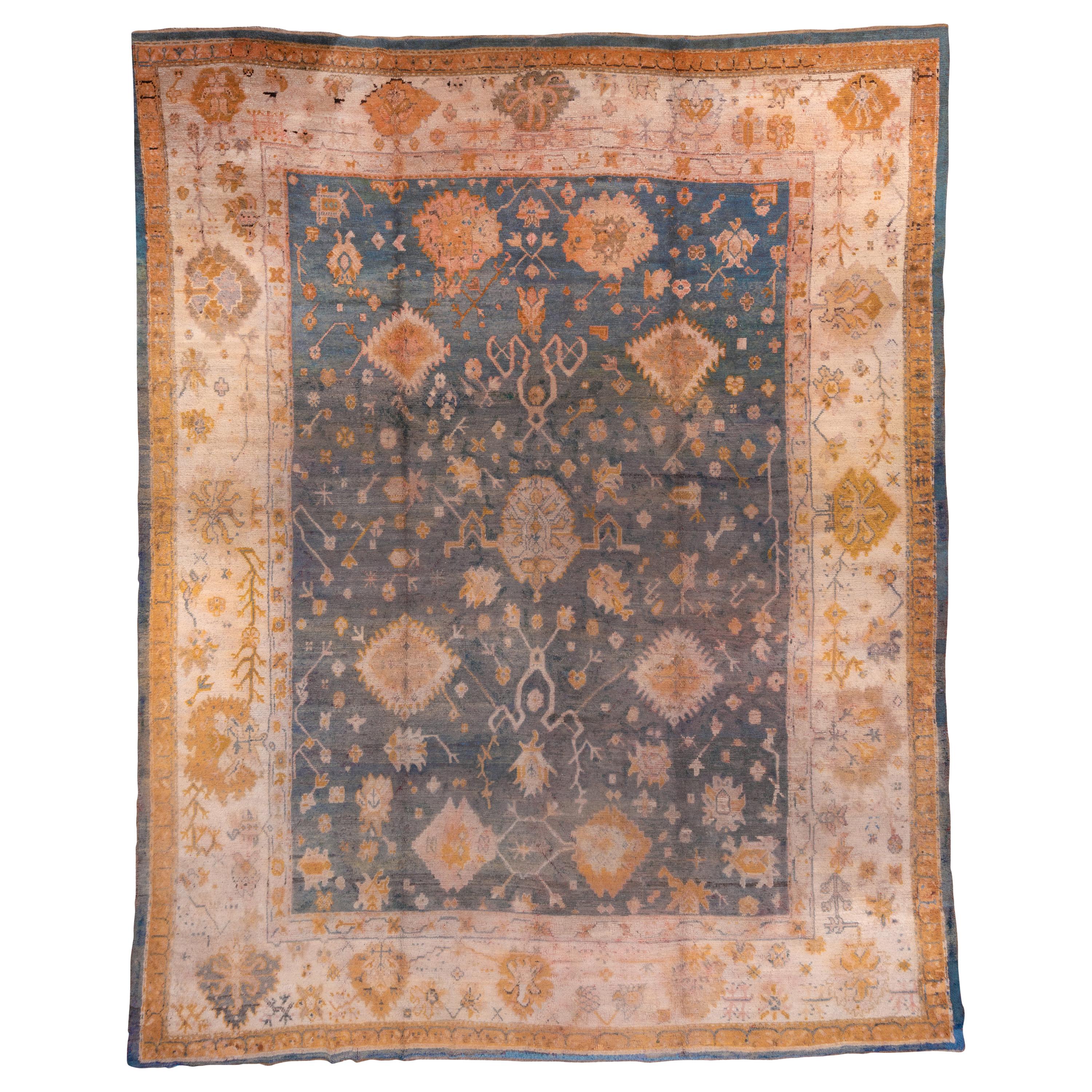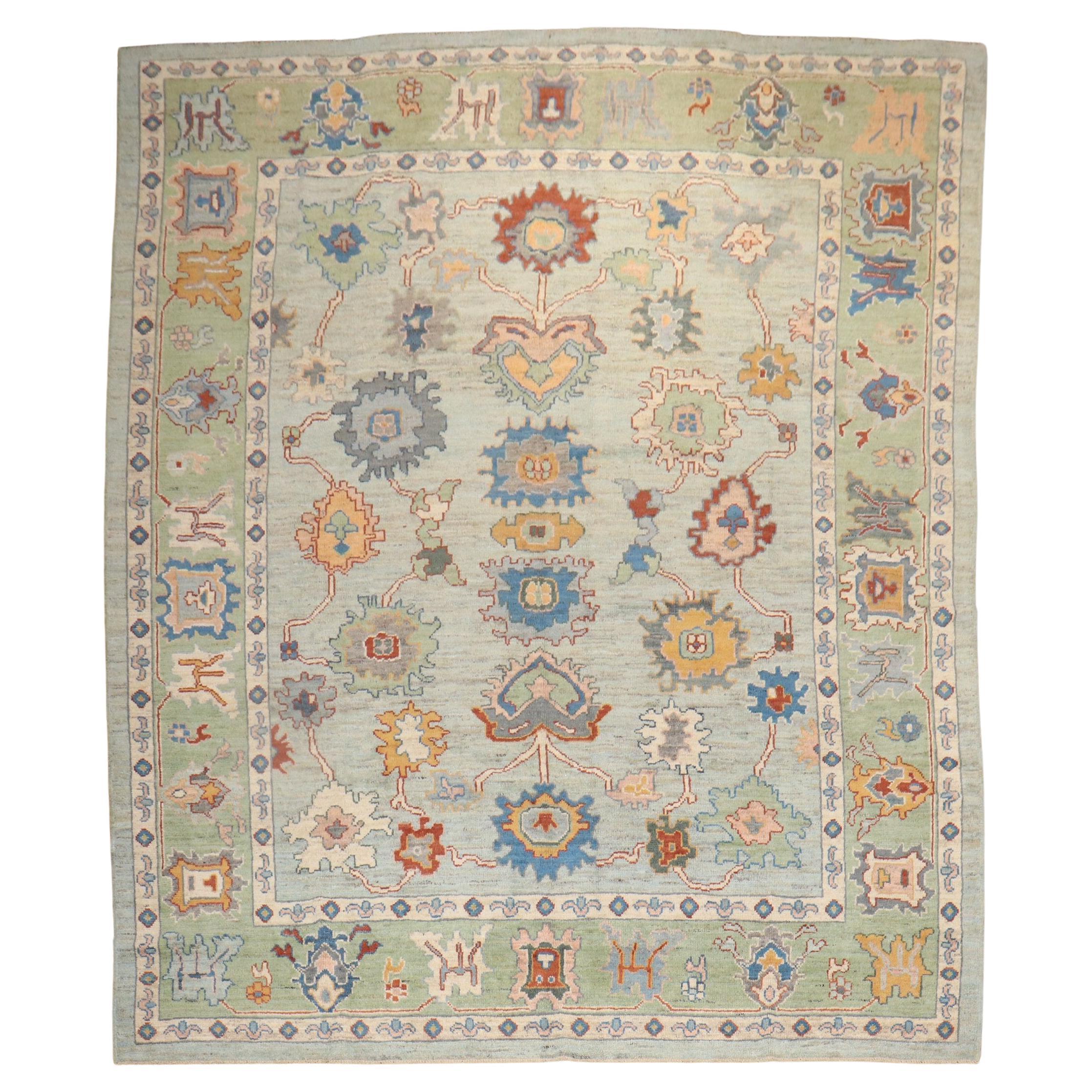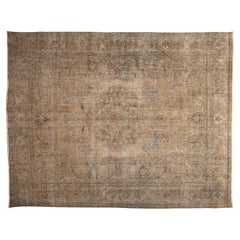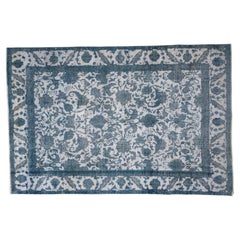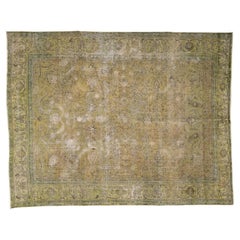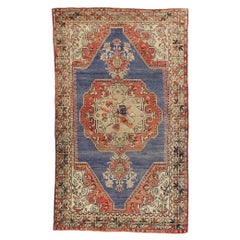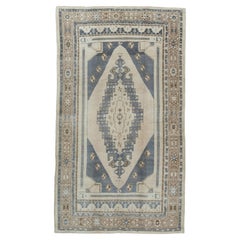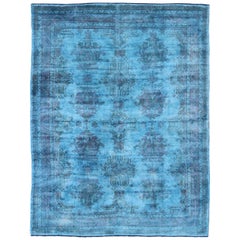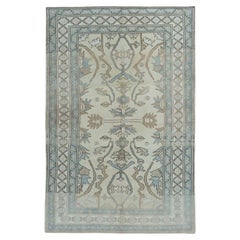Items Similar to 20th Century, Vintage Blue Turkish Oushak
Want more images or videos?
Request additional images or videos from the seller
1 of 6
20th Century, Vintage Blue Turkish Oushak
$5,825
£4,500.82
€5,203.38
CA$8,231.15
A$9,231.78
CHF 4,834.54
MX$112,175.10
NOK 61,390.55
SEK 58,202.57
DKK 38,840.48
About the Item
This unique oushak promotes a cool and suave energy. The contrast of colors and allover motif makes this rug a truly captivating piece. From Turkey, overdyed and beautifully woven with 100% handspun New Zealand wool.
Size - 9'1" x 12'8"
Color - Turquoise and sapphire
Type - Vintage Oushak
**Certified and recognized as a “child labor free” rug company. As a result of our mission of creating worldwide beauty, a portion of all purchases goes directly to “Weaving a Brighter Future for Humanity” and eradicating child labor in the rug weaving industry.**
About the Seller
No Reviews Yet
Vetted Professional Seller
Every seller passes strict standards for authenticity and reliability
Established in 1790
1stDibs seller since 2022
6 sales on 1stDibs
Typical response time: 19 hours
- ShippingRetrieving quote...Shipping from: Paradise Valley, AZ
- Return Policy
Authenticity Guarantee
In the unlikely event there’s an issue with an item’s authenticity, contact us within 1 year for a full refund. DetailsMoney-Back Guarantee
If your item is not as described, is damaged in transit, or does not arrive, contact us within 7 days for a full refund. Details24-Hour Cancellation
You have a 24-hour grace period in which to reconsider your purchase, with no questions asked.Vetted Professional Sellers
Our world-class sellers must adhere to strict standards for service and quality, maintaining the integrity of our listings.Price-Match Guarantee
If you find that a seller listed the same item for a lower price elsewhere, we’ll match it.Trusted Global Delivery
Our best-in-class carrier network provides specialized shipping options worldwide, including custom delivery.More From This Seller
View All20th Century Vintage Turkish Oushak
Located in Paradise Valley, AZ
Stunning 1960's Turkish Oushak, displaying a tan background and border with brown and subtle notes of olive green highlights throughout. Handwoven by Turkey's finest, using pure hand...
Category
Vintage 1960s Turkish Oushak Turkish Rugs
Materials
Wool
20th Century Vintage Oushak
Located in Paradise Valley, AZ
This exquisite Vintage Oushak rug is a true work of art skillfully handwoven by experienced artisans using traditional methods. Adorned with intricate patterns and a color scheme cra...
Category
Vintage 1960s Pakistani Oushak Central Asian Rugs
Materials
Wool
20th Century Vintage Oushak
Located in Paradise Valley, AZ
This exquisite Vintage Oushak rug is a true work of art skillfully handwoven by experienced artisans using traditional methods.
Adorned with intricate patterns and a color scheme c...
Category
Vintage 1960s Turkish Oushak Central Asian Rugs
Materials
Wool
20th Century Vintage Oushak
Located in Paradise Valley, AZ
This exquisite Vintage Oushak rug is a true work of art skillfully handwoven by experienced artisans using traditional methods. Adorned with intricate patterns and a color scheme cra...
Category
Vintage 1960s Turkish Oushak Turkish Rugs
Materials
Wool
20th Century Vintage Oushak
Located in Paradise Valley, AZ
This exquisite Vintage Oushak rug is a true work of art skillfully handwoven by experienced artisans using traditional methods. Adorned with intricate patterns and a color scheme cra...
Category
Vintage 1960s Persian Oushak Persian Rugs
Materials
Wool
20th Century Vintage Oushak
Located in Paradise Valley, AZ
This exquisite Vintage Oushak rug is a true work of art skillfully handwoven by experienced artisans using traditional methods. Adorned with intricate patterns and a color scheme cra...
Category
Vintage 1960s Turkish Oushak Central Asian Rugs
Materials
Wool
You May Also Like
Vintage Blue Turkish Oushak Carpet
Located in Dallas, TX
52256 Vintage Blue Turkish Oushak Rug, 04’07 x 07’06. Combining elements of Modern Rustic style with a sense of relaxed refinement, this hand-knotted wool vintage Turkish Oushak rug ...
Category
Mid-20th Century Turkish Oushak Turkish Rugs
Materials
Wool
$2,020 Sale Price
30% Off
Vintage Blue Turkish Oushak Rug 4'9 x 8'4
Located in New York, NY
4'9 x 8'4. Hand-woven in Turkey where rug weaving is the culture rather than a business. Rugs from Turkey are known for the high quality of their wool their beautiful patterns and w...
Category
20th Century Turkish Oushak Turkish Rugs
Materials
Wool
Vintage Turkish Oushak Over-Dyed in Blue Color
Located in Atlanta, GA
This vintage Turkish carpet with a classical composition has been overdyed with blue, light blue and pink pigments. With both classic and contemporary characteristics, this beautiful...
Category
Vintage 1980s Turkish Oushak Turkish Rugs
Materials
Wool
$7,600 Sale Price
20% Off
Vintage Turkish Blue Oushak Hand Knotted Wool Area Rug
Located in New York, NY
4'3 x 6'. These attractive rugs are suitable for a wide variety of places, but the significant effect of Oushaks is that they bring space together, making it cozy and warm. The artis...
Category
20th Century Turkish Oushak Turkish Rugs
Materials
Wool
Beautiful Blue Antique Turkish Oushak Carpet
Located in New York, NY
In a general Persian Heriz semi-geometric style, the Turkey red field of this western Anatolian workshop carpet displays a serrated, pendanted and lobed light blue medallion with an ...
Category
Vintage 1910s Turkish Oushak Turkish Rugs
Materials
Wool
Blue Vintage Inspired Turkish Oushak Carpet
Located in New York, NY
Blue Vintage Room Size Size Inspired Vintage Turkish Oushak Carpet
10'5'' x 13'2''
Category
21st Century and Contemporary Turkish Central Asian Rugs
Materials
Wool
More Ways To Browse
Antique Chinese Silver Marks
Antique Victorian Armchair
Arts Crafts Oak Chair
Bird Tapestry
Danish Writing Desk
Ebonized Wood Dining Table
French Country Dining Tables
French Old Paris Plates
Mahogany Tables Casters
Round Brass Coffee Tables
Used Plastic Molds
Vintage Metal Bar Cart
White Lacquer Dining Chair
Wicker Chair 1950s
1920 Rattan
1940s Maple Table
Alvar Aalto Glass Table
Antique Green Bowl
